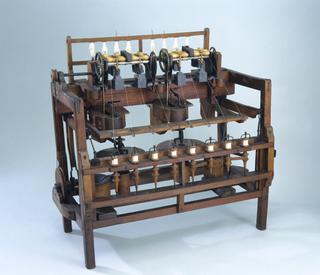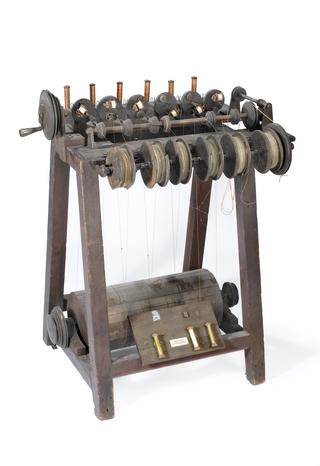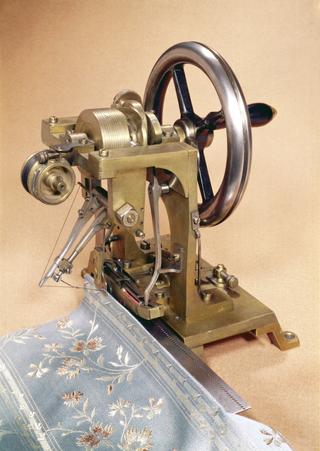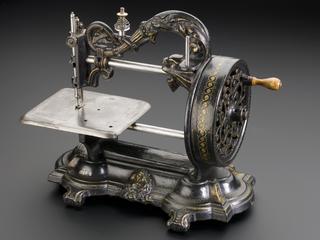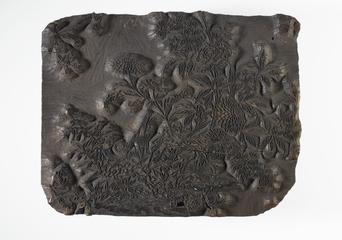Replica of Crompton's Mule spinning frame
Main frame of a copy of Samuel Crompton's mule spinning frame, by Dobson and Barlow, Bolton, Manchester, England. The original, from which this copy was made, was invented by Crompton and used by him between 1800-1815. It is preserved at Chadwick Museum (now Bolton Museum & Art Gallery).
More
The original, from which this copy was made, was used by Crompton between 1800-1815 and is preserved at Chadwick Museum (now Bolton Museum & Art Gallery). This hybrid spinning machine combined Arkwright's method of drawing out the roving (twisted cotton fibres) by rollers and Hargreaves's reciprocating carriage. It was invented by Samuel Crompton (1753-1827) of Bolton, Lancashire, between 1772 and 1779 for the purpose of spinning the fine yarn suitable for weft in weaving. The original machine, of which this is a replica, had about 144 spindles, but this copy has at some time been cut down to a convenient size for exhibition purposes.
- Object Number:
- 1912-317/1
- type:
- spinning jennies and spinning wheels
